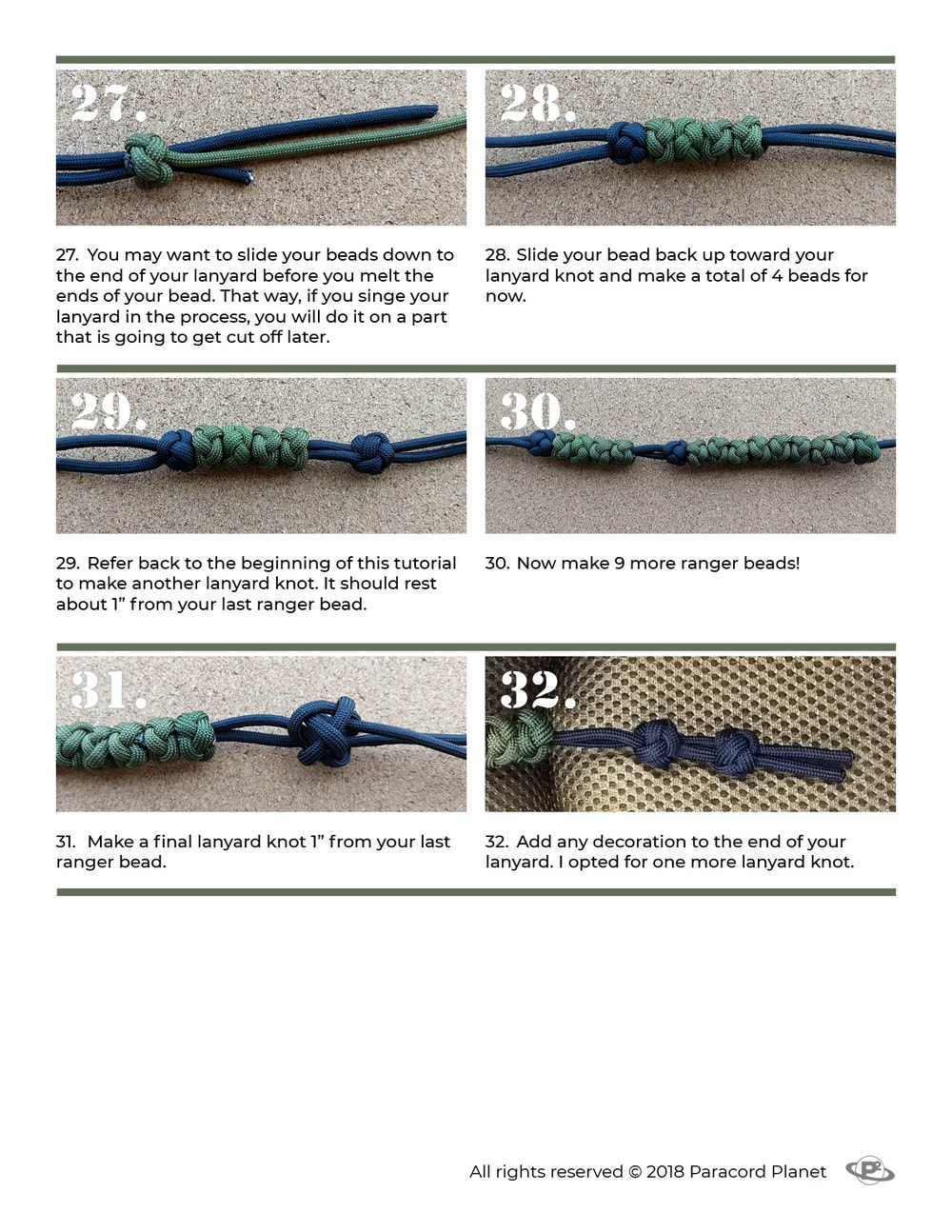Materials:
- 5 ft. of 550 paracord to make the lanyard
- 10 ft. of 550 paracord to make 13 "ranger beads"
Download Link:





Materials:
- 5 ft. of 550 paracord to make the lanyard
- 10 ft. of 550 paracord to make 13 "ranger beads"
How to Use your Ranger Beads:
First, it should be understood that pace count beads are not an exact way to measure distance. Pace beads use the length of your stride to determine how far you have walked. Factors such as terrain, weather, and weight of gear you are carrying will all change the length of your stride. There are ways to take these variable into account, but just know that it is not an exact science.
There are two methods to measuring distance with pace count beads. Both require that you know the length of your stride by walking a preset distance. (Usually 100 yards in the U.S.) The best way to do this is by finding a nearby football field and walking from one end zone line to the other, keeping track of how many times your left foot hits the ground. To make your measurement a little more accurate, wear a fully loaded pack—or whatever gear you think you will be wearing out in the wilderness—for this distance measurement. Walk the distance 3 times. If the number of steps differ, take the average of all 3.
Let's say that you ended up with exactly 60 paces in 100 yards. The pace counter works like an abacus. The 9 lower beads are the one's place; the 4 upper beads are the ten's place.
Methods:
- Measure by Distance. After your left foot hits the ground 60 times, move one of the lower beads down. Continue doing this until all 9 are pulled. On the tenth time, pull down one top bead and raise all the lower beads back up. You have now walked 1,000 yards. By the time you pull all the top beads down, you would have walked 5,000 yards—or a little less than 3 miles. This is probably the more useful method to using pace count beads, as you are then dealing with real measurements.
- Measure by Paces. Instead of counting yards, you can count paces and do the calculation afterward. You will need to know your individual pace length for this method. If 60 paces equaled 100 yards, divide it by 60 to get the length of one pace. You would get 1.66666666666666666666666666666666666666666. You are beginning to see the problem with this method. Every 10 paces, pull a bead down. When all beads are down, you will have walked 1,000 paces. Either divide 1,000 by your 100 yard pace count (1,000/60 = 16.7 x1,000 paces walked = 1,670 yards total) or by multiplying it by your individual pace length (1,000yd x 1.67 =1,670 yards).


